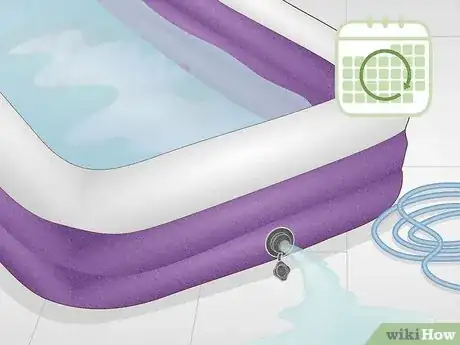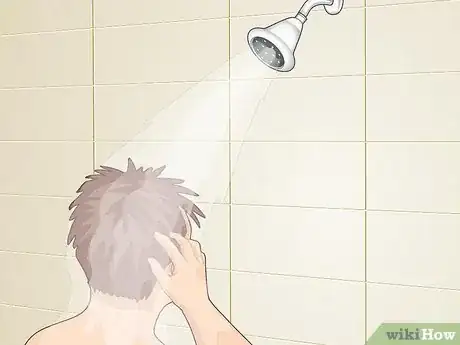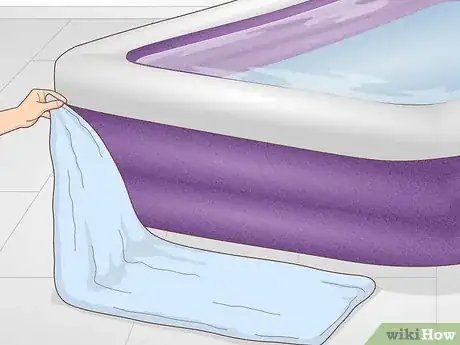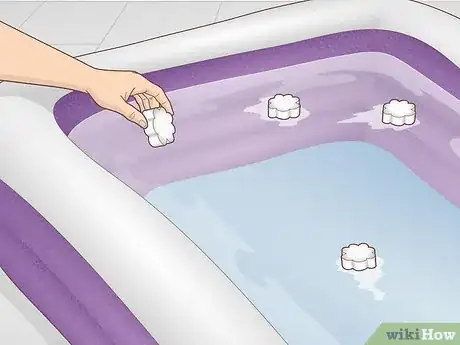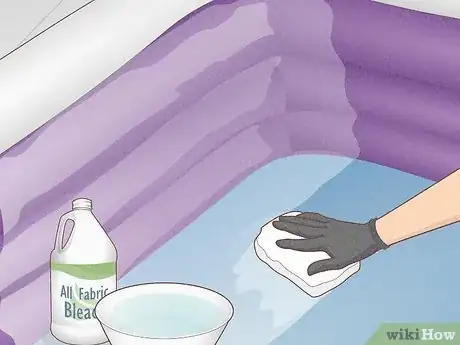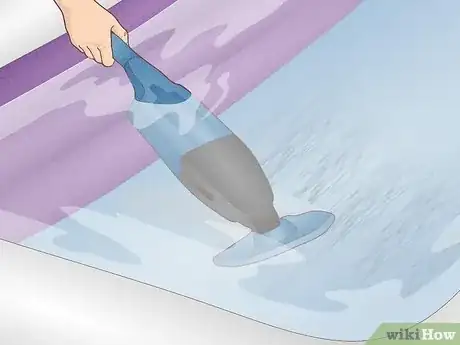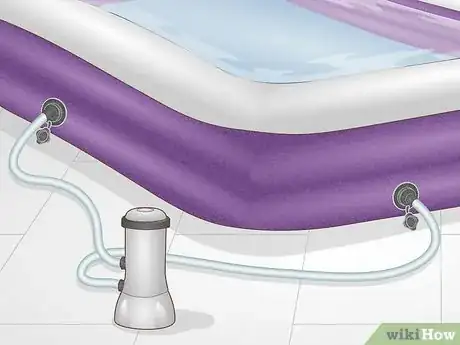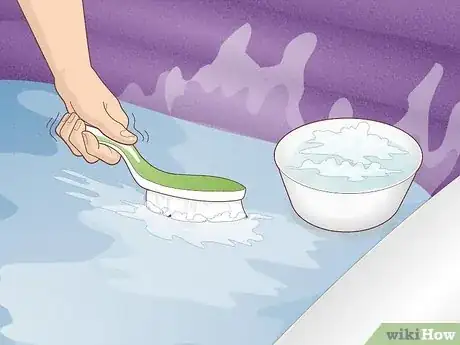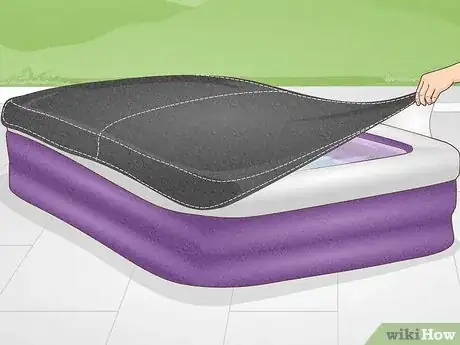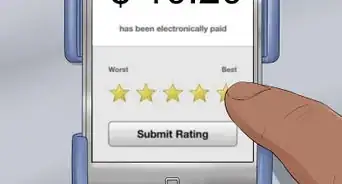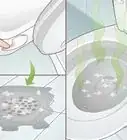This article was co-authored by wikiHow staff writer, Jessica Gibson. Jessica Gibson is a Writer and Editor who's been with wikiHow since 2014. After completing a year of art studies at the Emily Carr University in Vancouver, she graduated from Columbia College with a BA in History. Jessica also completed an MA in History from The University of Oregon in 2013.
There are 9 references cited in this article, which can be found at the bottom of the page.
This article has been viewed 1,579 times.
Learn more...
Kiddie pools are a welcome oasis in the summer until they start looking grimy. Although the CDC recommends that you empty the pool after each use, you might be wondering how to keep the water in it for longer. We're here to help! Check out our handy hints for keeping a kiddie pool clean so you can enjoy it all summer long.
Things You Should Know
- Drain and rinse the pool every day if possible. For a more intense clean, scrub the pool with soapy water and dry it in the sun for at least 4 hours.
- To keep the water clean, have kids shower and wipe their feet before getting in. Put an oil-absorbing sponge in the pool to capture sweat and sunscreen.
- Skim debris off the top off the water regularly and use a handheld pool vacuum to suck up dirt at the bottom of the pool.
- Cover the pool when not in use.
Steps
Tip
- You may have heard of putting baking soda into a kiddie pool. However, baking soda won't disinfect or keep the water clean. It's better to use baking soda as a cleaning product when the pool is empty.
Warnings
- While the CDC advises against using bleach to keep the pool water clean, it is effective at sanitizing the pool after a kid poops or vomits.[12]⧼thumbs_response⧽
- The CDC also advises against putting chlorine or disinfectants into kiddie pool water because it's too difficult to precisely treat the water.[13]⧼thumbs_response⧽
References
- ↑ https://www.cdc.gov/healthywater/swimming/swimmers/inflatable-plastic-pools.html
- ↑ https://waterandhealth.org/healthy-pools/safe-fun-kiddie-pool/
- ↑ https://inthewash.co.uk/cleaning/how-to-keep-paddling-pool-clean/
- ↑ https://mybackyardlife.com/how-to-keep-inflatable-pool-water-clean/
- ↑ https://mybackyardlife.com/how-to-keep-inflatable-pool-water-clean/
- ↑ https://www.thesun.co.uk/fabulous/15241078/parents-ways-paddling-pool-water-clean-washing-bowl-hack-genius/
- ↑ https://www.cdc.gov/healthywater/swimming/swimmers/inflatable-plastic-pools.html
- ↑ https://youtu.be/nOrfuyukzog?t=195
- ↑ https://youtu.be/Nuw9VrI90jE?t=29
